If you’re a fan of pink, this is the post for you!
Rock rose, Pavonia lasiopetala, is a small shrub adorned with blooming Barbie-doll pink flowers through much of the growing season. In my Austin garden, the first blooms appear in late April, with stragglers showing up as far into the calendar year as early December. The charming hibiscus-like flowers,
…framed by fuzzy, scalloped foliage, are congenial and reliable garden partners. A water-wise perennial shrub, Rock rose flowers are visited by many winged things: butterflies, bees (both native and honey), and hummingbirds. I guess all that pollination activity explains why they seed out so readily–I always have many seedlings to share.
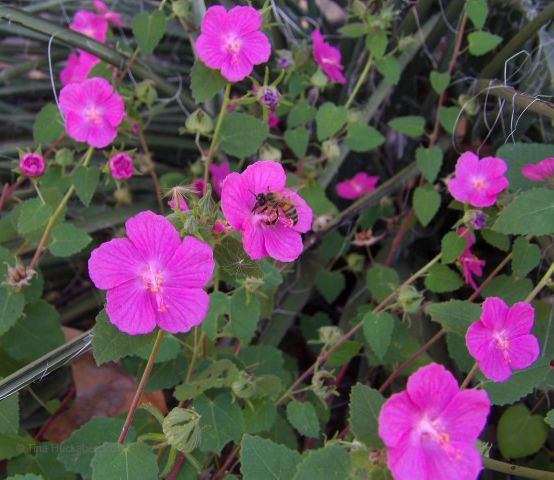
Honeybees and several varieties of native bees regularly work the blooms. Most of the butterflies who visit Rock rose blossoms are smaller skippers and hairstreaks.
With its mallow blooms ranging from subtle, sweet pink,
…to garish, stopp’em-in-their-tracks pink,
…this shrub is a must-have for anyone gardening in Central Texas and southward into Mexico.
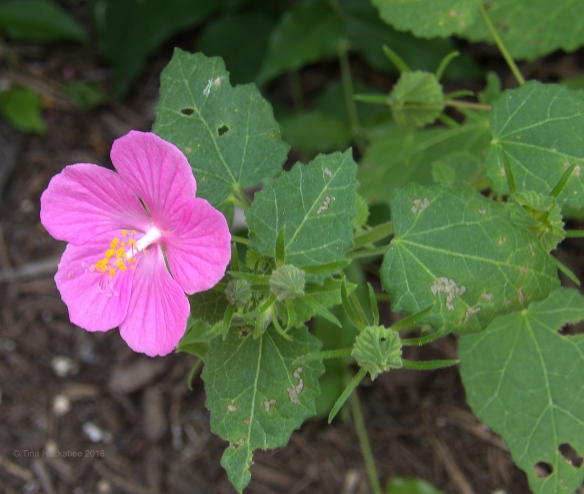
A single flower paired with blooms-about-to-happen. Rock rose isn’t a host plant for any insect that I’m aware of, but someone’s been nibbling at these leaves.
In winter, Rock rose retains some of its leaves, but definitely thins out; I guess I’d label it as semi-evergreen. I typically wait until late February to prune back the shrubs to about 10-12 inches in height. In fact, I just completed this winter chore.
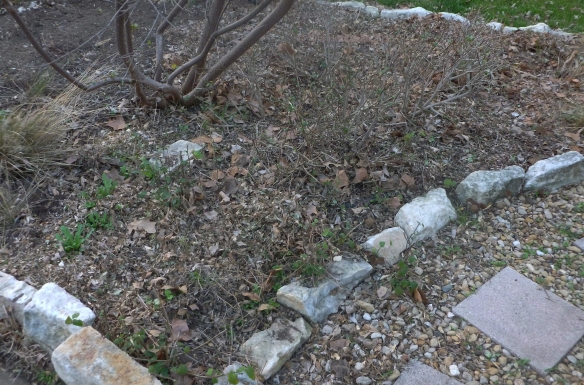
Look closely to see the nearly naked limbs of February just-pruned Rock rose shrubs. This garden boasts a cluster of Rock rose shrubs which border a walkway.
As with all things winter in my zone 8b garden, now is a good time to prune and clean out garden detritus which has accumulated.
Throughout March and April, the foliage will return–vigorous and verdant–ahead of the rosy charmers.
The first set of blossoms sprout in spring, blooming prolifically through summer, depending upon rainfall and /or irrigation.
Opening at dawn, the flowers remain available for critter pollinating and gardener viewing until afternoon, when they shutter their petals for the night. As summer temperatures creep upwards, the blooms close earlier, often by mid-afternoon. This is especially true of those growing in full sun. Well, why not?? It’s hot out there and closing the flower shop early in the day is how these plants conserve moisture during the dry, toasty summer months.
Because Rock rose produces masses of flowers, with heaps of seeds following, I typically prune a second time, by about one-third, sometime between May and late June, depending upon rainfall. I do this for two reasons: one–to limit seed dispersion after blooming (read: a good, old-fashioned “dead-heading”); two–to shape the shrubs and encourage new growth. Rock rose blooms on new wood, and if the gardener prunes the shrub 2-3 times in the growing season, the plants look tidier. That said, I’ve seen many Rock rose shrubs go unpruned during the growing season and the worst result is that they’re leggy and floppy and produce multitudes of seeds, resulting in more Rock rose plants.
That’s not a bad thing.
Rock rose is a stellar summer bloomer, even during drought, but the flower show declines unless there’s measurable rainfall. In the driest period of summer, supplemental watering is appreciated, but Rock rose is a water-wise plant and thrives without much irrigation.
I prune once more in late August, ahead of the autumn rains, shorter days, and the promise of cooler temperatures. This readies the pink wonders for their autumn show!
As the temperatures cool in autumn, the flowers still open early, but stay open until sundown.
I like Rock rose planted in groups of three, or more. This maximizes visual impact in the garden and pollinators have plenty of pink to partake of. It combines beautifully with other plants:
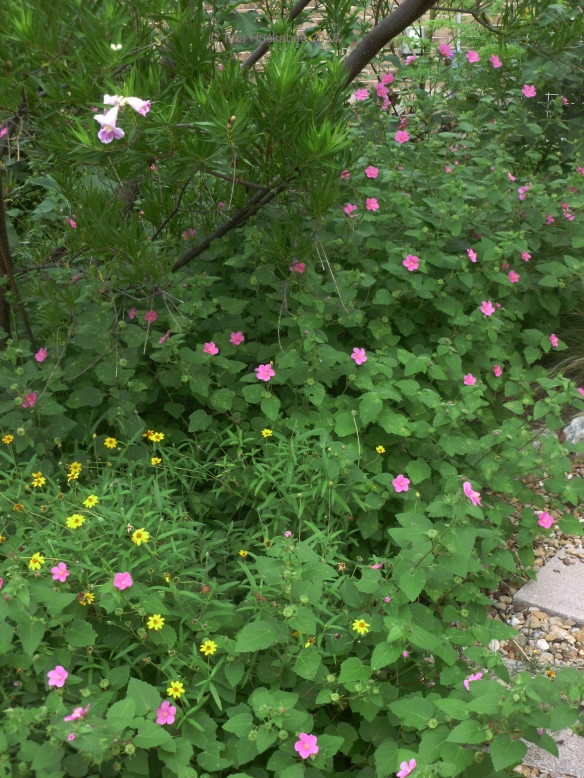
One of my favorite combinations is rosy Rock rose planted with sunshine yellow Zexmenia (Wedelia acapulcensis var. hispida).
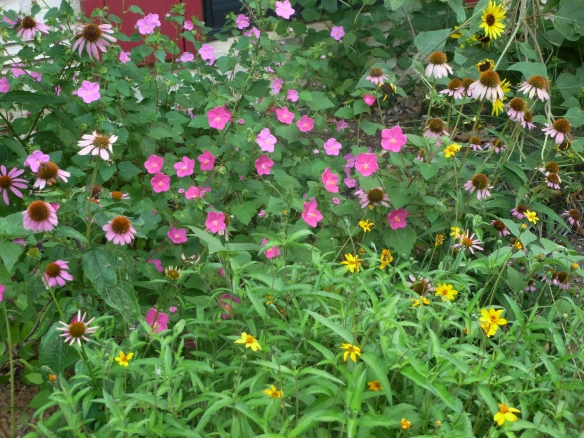
Rock rose, Zexmenia, and Purple coneflower (Echinacea purpurea) are a winning combo in spring and summer.
Rock rose performs best in full sun, but handles significant shade, with diminished flowering; I wouldn’t recommend it for deep shade. Shrubs growing in shade (and sometimes, those in sun) may develop mildew on the foliage. Typically, the mildew resolves and other than temporary unsightliness, isn’t an issue, but it’s something the gardener should consider when choosing to plant this perennial. When it happens, I prune offending shrubs and the foliage rebounds.
Another issue with Rock rose is its proclivity for seed production. If you grow this shrub, you will have Rock rose babies each year.
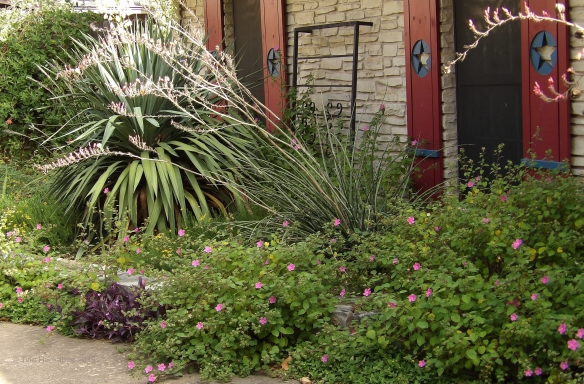
The Rock rose which border the raised bed are all volunteers. They’ve grown out of the crack between the retaining wall and the driveway. Even in full, west sun, these Rock rose shrubs never wilt. Who knew that concrete is such an effective mulch?
You can pull seedlings and compost, transplant them elsewhere in your garden, or give them away. More than likely, you’ll do all three of those things. The seed bounty of this native plant–while annoying–is a gift.
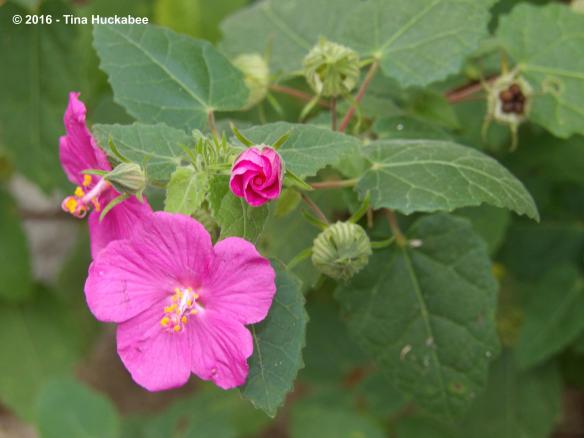
From left to right: two open blooms, a bloom about to open, a newly closed bloom with developing seeds, and in the background, a seedhead with seeds nearly ready to disperse.
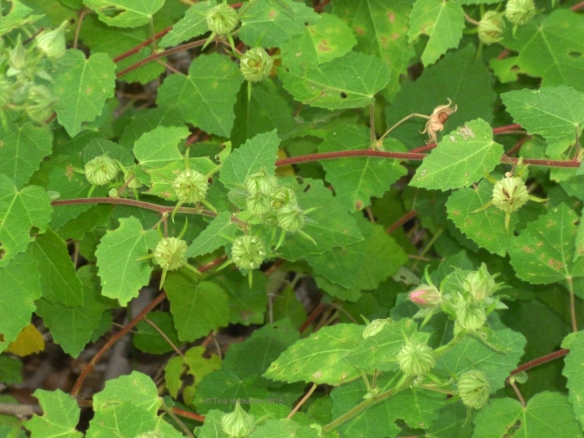
When my shrubs develop this many seedheads, I grab my Felco pruners and have at it! I prune the branches as little as 4-5 inches to as much as 12 inches, all depending upon how big I’ve let my shrubs get (ahem!). The goal is new stem growth and a new set of blooms.
As well as providing for pollinators, I have witnessed various finches nibbling at the seeds, so Rock rose’s worth for wildlife extends beyond the blooms.
For those gardening with deer guests, Rock rose is only mildly deer-resistant.
Rock rose is not a long-lived shrub. I’ve read that individual plants live approximately 5 years. I can vouch that some of my plants have died at around 5 years, but most have lived far longer. If you notice foliage turning yellow and withering as if needing water (and you’ve irrigated or have had rain), don’t try to save the plant–it’s done. Your best bet is to yank it out and plant one of the many seedlings which have popped up in your garden.
Rock rose is a lovely, tough, blooming shrub providing plenty for pollinators and birds. It requires some maintenance during the growing season in the form of regular pruning, but is otherwise an easy-peasy plant to grow, with rewards aplenty.
Spring:
Summer:
Fall:
Winter:
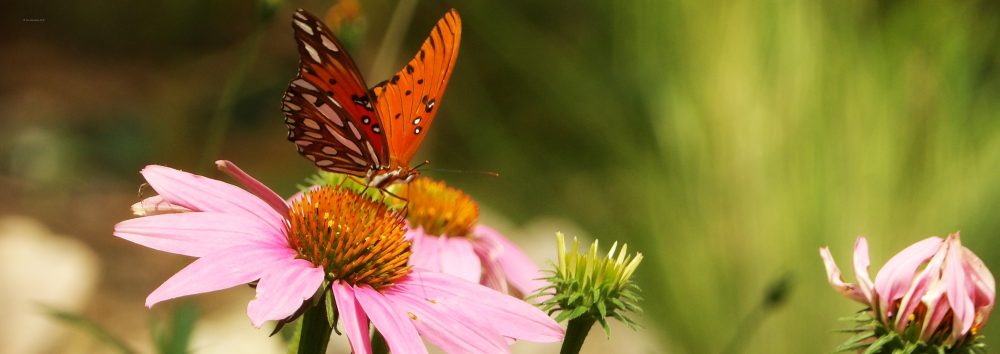

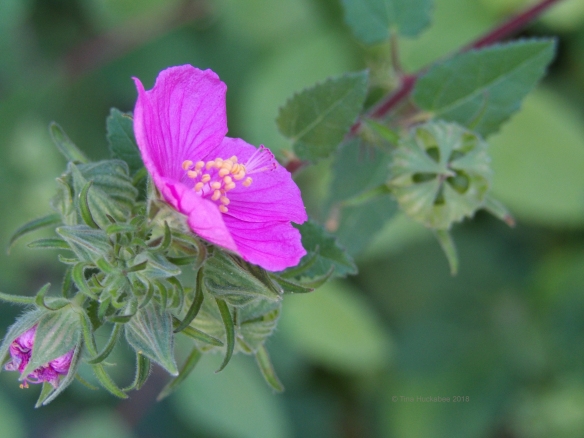
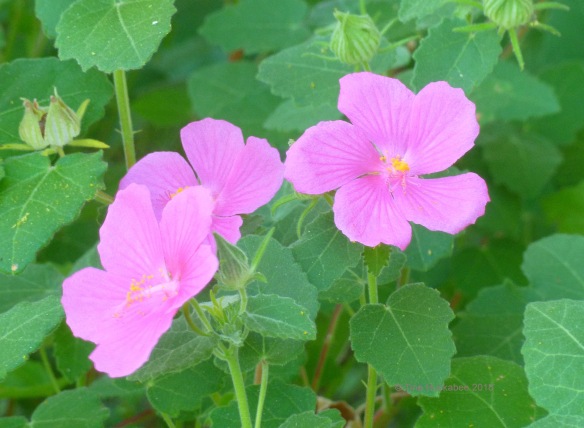
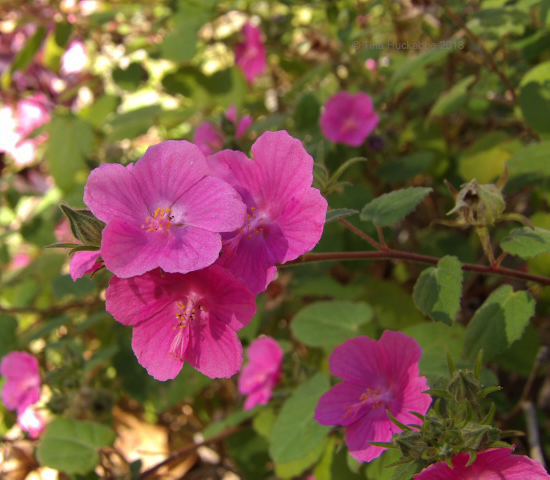
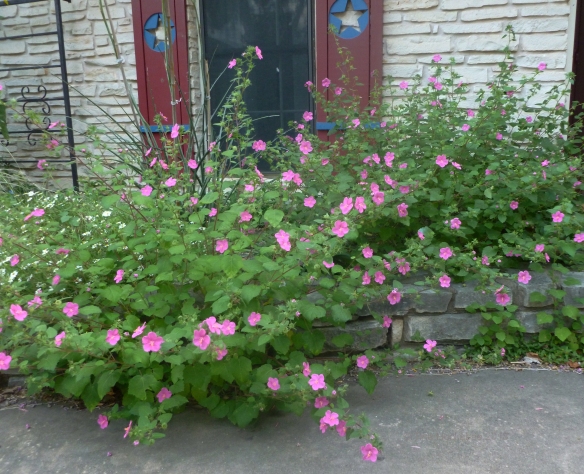
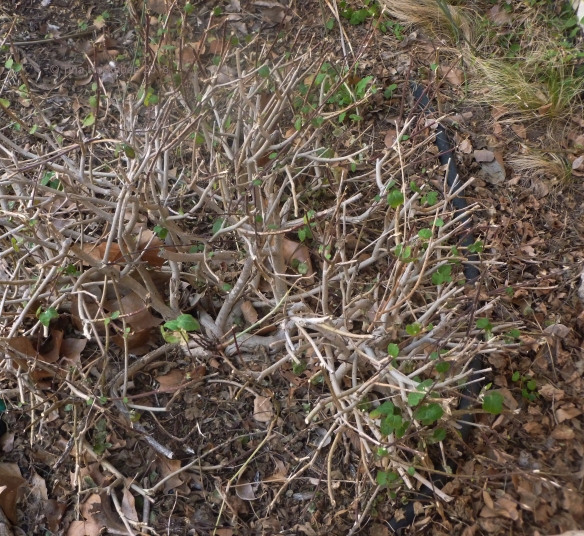
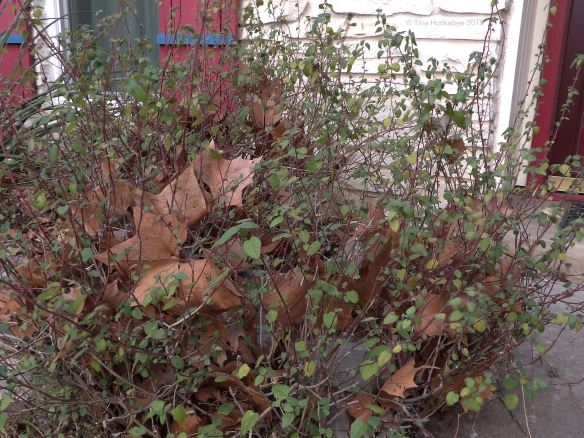
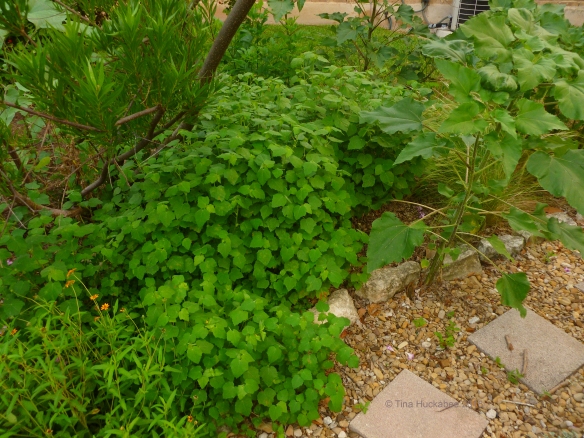
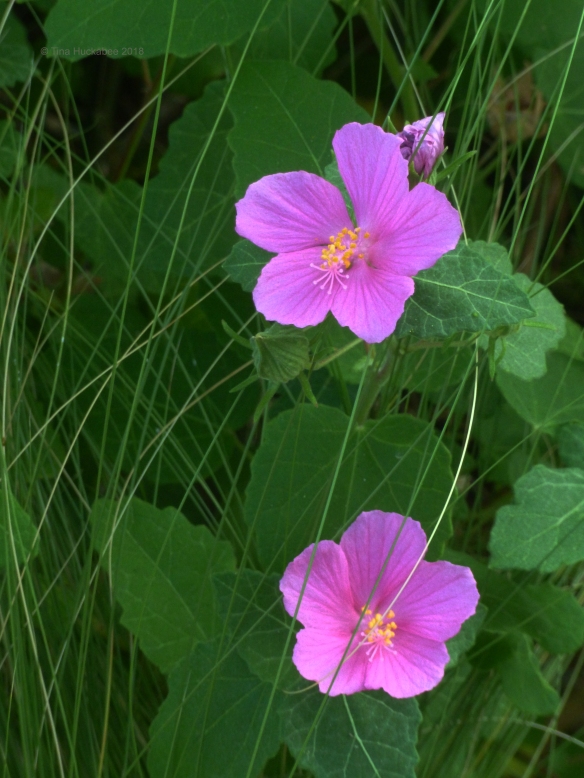
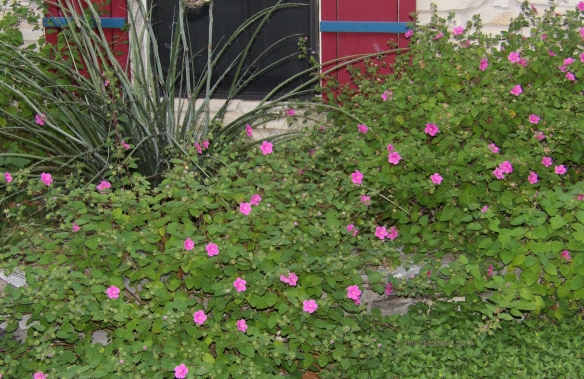
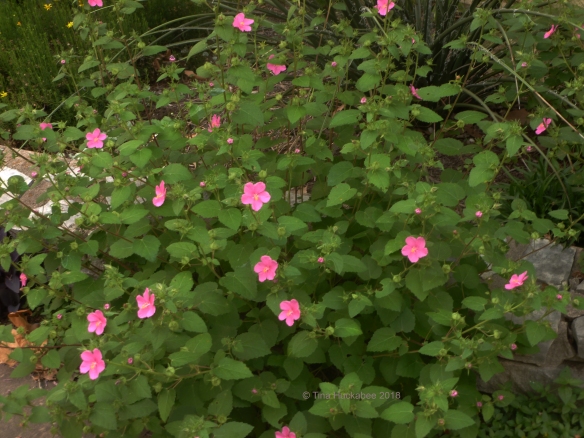

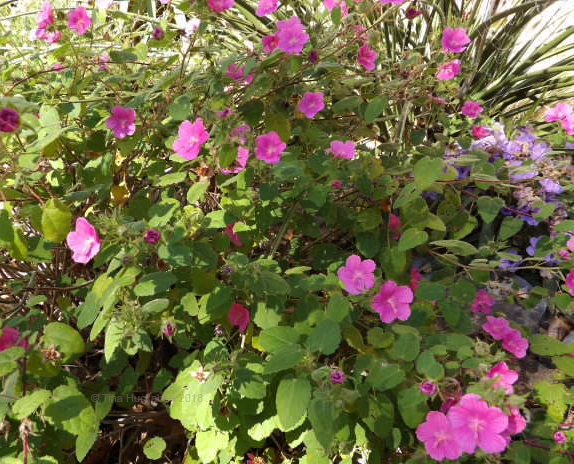
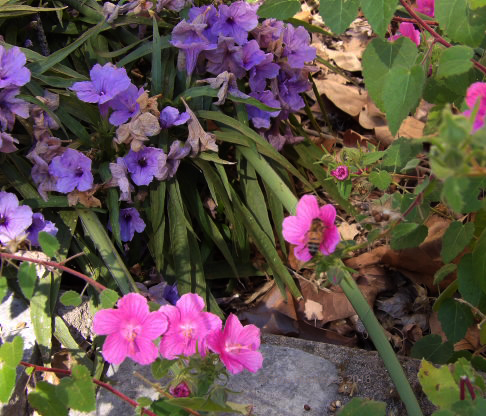
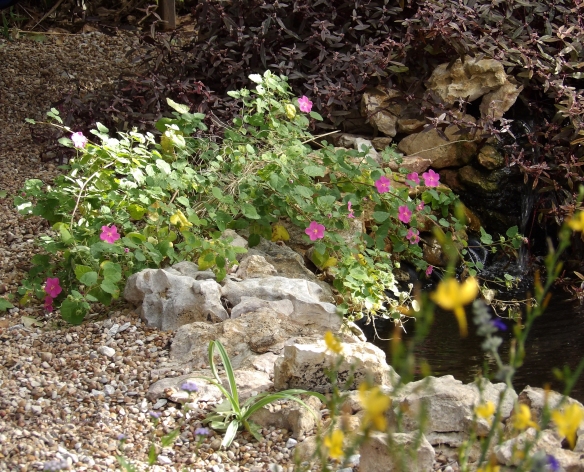
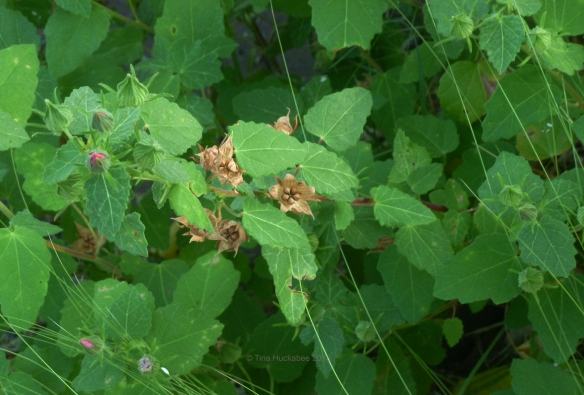
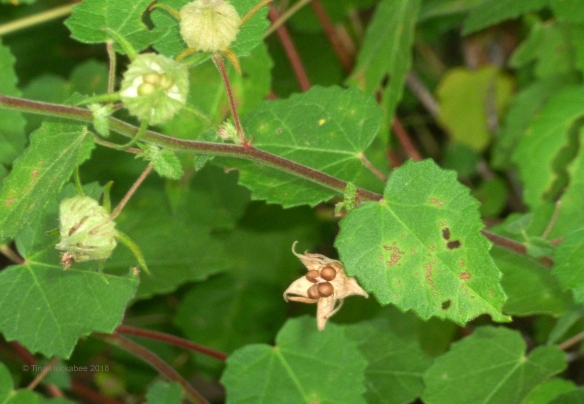
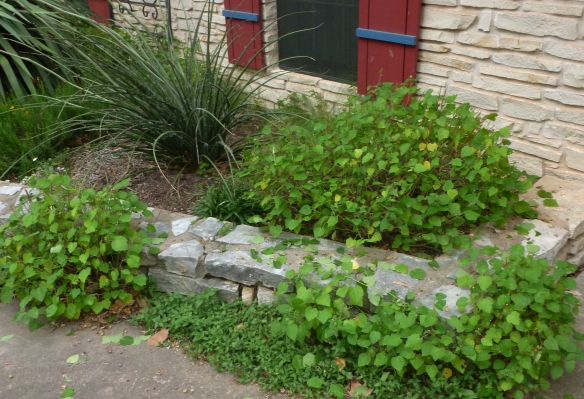
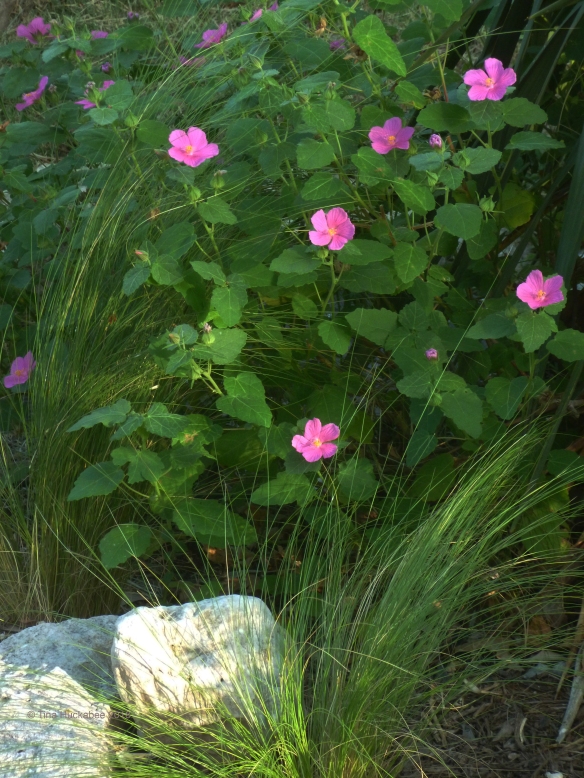
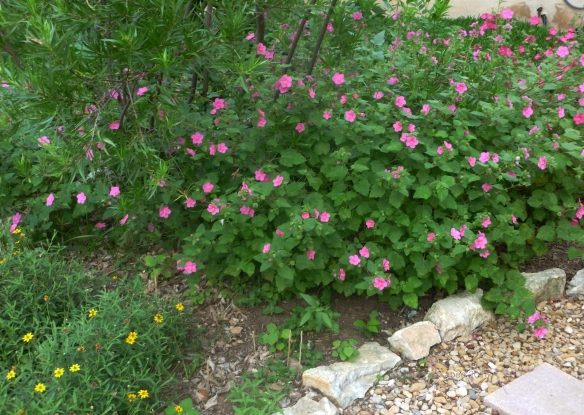
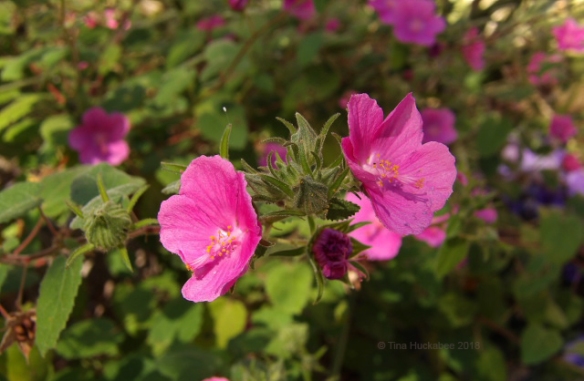
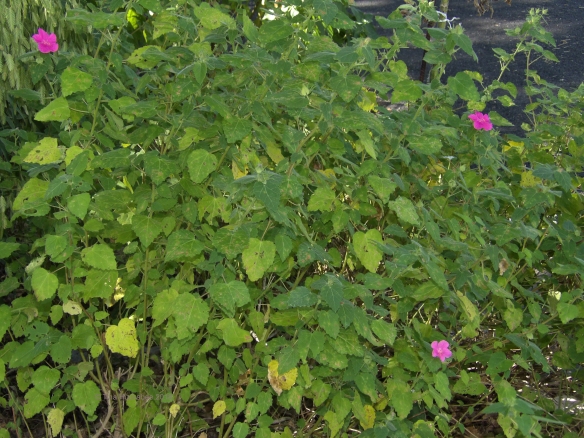
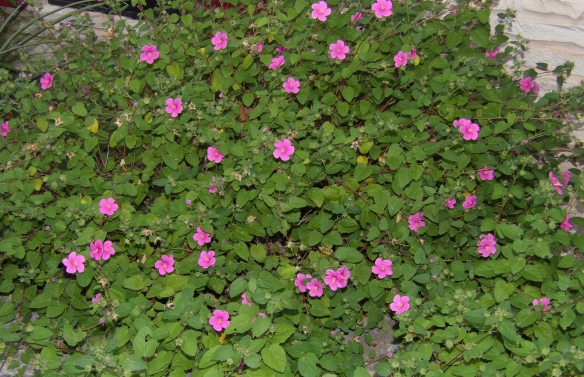
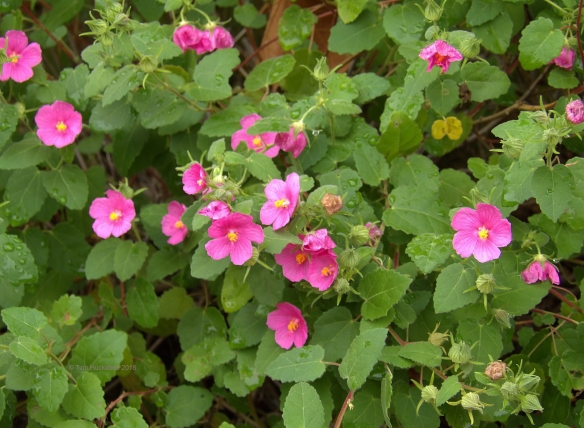
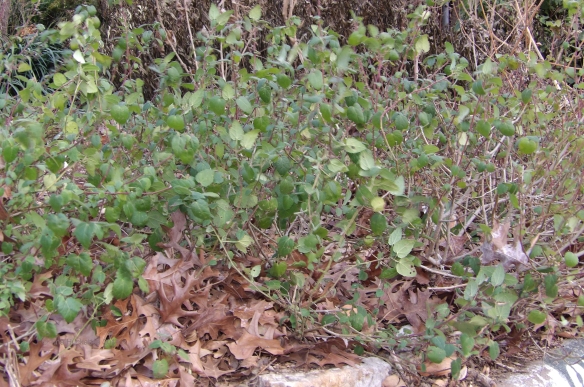
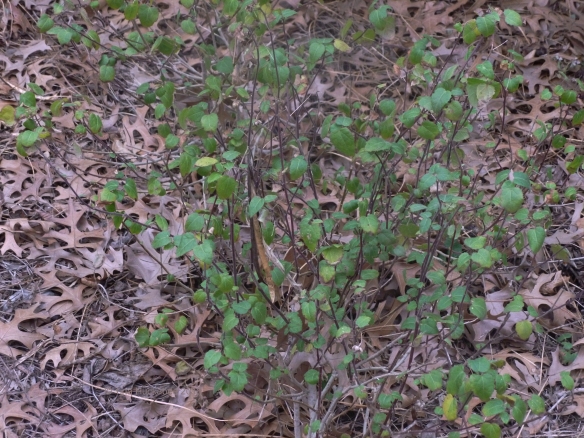
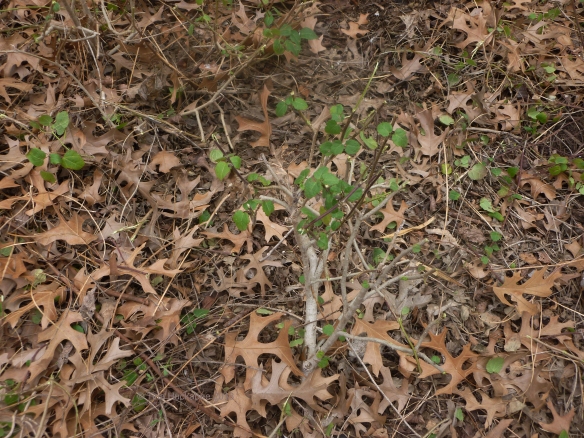
What a beauty. A friend in the hill country has this in her rock garden, and everything you say about it, she would agree with: beautiful, sometimes slightly annoying, but well worth having. It’s been interesting to watch her plants move a bit around the garden, as some die and others pop up because of self-seeding, birds, etc.
How would these do in a pot? This might be something that would do well on my west-northwest facing patio, now that I think about it.
LikeLike
Isn’t it? Rock rose are perfect in rock gardens. I don’t see why one wouldn’t work in a pot–you’d need to be careful about over-watering, but otherwise,I imagine a shrub would be lovely. Next time you’re in Austin, I have plenty of seedlngs! Or, if you wait a bit, I’ll have some seeds later this spring that I could mail to you.
LikeLike
That is not what I was expecting for ‘rockrose’. I was thinking of a Cistus.
LikeLike
Nope, Rock rose is a mallow.
LikeLiked by 1 person
That is why we use Latin.
LikeLike
Indeed!
LikeLike
This is lovely.
LikeLike
It is, isn’t it?
LikeLike
Tina what an absolutely gorgeous flower and wonderful plant….grows profusely and native pollinators love it….what’s not to adore!
LikeLike
Thanks, Donna–it’s a great plant and I’m glad to grow it–and all of its babies!
LikeLike
I have tried to grow Rock Rose here, but I think it is just too wet. I will enjoy yours.
LikeLike
Yeah, I’ll bet it doesn’t quite work in your more humid climate. Years ago, I gave my mom some (in Corpus) and they did not work for her.
LikeLiked by 1 person
Tina the Rock Rose is really beautiful. The color of its beautiful mauve flowers to a light pink is divine. I see Rock Rose as a very resistant and prolific bush in self-resemblance, which to maintain its flowering needs several prunings throughout the year. But best of all are its flowers that feed all kinds of bees, butterflies and hummingbirds. And its seeds pecked by a finch. And the number of months that produce flowers: from April to autumn uninterruptedly. I find it interesting that the flowers open in the morning and close at night, but when it is very hot they close in the middle of the afternoon. They are very intelligent. Planted next to Yellow Sun Zexmenia is beautiful; and adding Echinacea purpurea is a wonderful trio. How it has grown big and beautiful with so much flower on the concrete! Amazing! Rock Rose I love: it feeds the pollinators, it does not require almost water, it self-propagates and it is divine. Thank you very much Tina for teaching us and telling us about this beautiful bush. Have a nice week. Greetings from Margarita.
LikeLike
Thank you, Margarita! I’m glad you like the Rock rose as much as I do–it’s a lovely plant and welcome in my garden. I hope you have a great week, too!
LikeLike
Very good article! I have had the mildew on the leaves before, but the plant seems OK. Neither the plants at my house in Cedar Creek or at a bee garden in Austin grows very much or has volunteers. Mine is straggly, too, but they aren’t in a real sunny location, s maybe that’s the problem. Thank you!
LikeLike
Thanks, Janet. Yeah, that mildew is really a non-issue, but it’s good to know that it happens and doesn’t impact the viablity of the plant. You’re correct: in shade, the rock rose will be less full and straggly. It is a sun-lover!
LikeLike
Pingback: Bird Parade: Wildlife Wednesday, June 2018 | My Gardener Says…
Pingback: June Pollinator Blooms | My Gardener Says…
Pingback: July Blooms | My Gardener Says…
Pingback: September Blooms | My Gardener Says…
I was given rock rose seeds by a friend. When is the best month to plant those in your zone ? I’m in Texas
LikeLike
Now!! Good luck, they’re easy plants.
LikeLike
I do love your posts. Appreciative, respectful, with a thoughtful eye to the up-close and the distance view … I think I would enjoy very much being your neighbor.
LikeLike
Thanks so much! Seeing the up-close and the long-view is helpful for me, I assume it is for others as well.
LikeLike
Pingback: November Blooms | My Gardener Says…